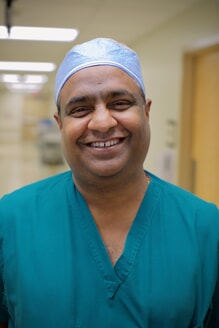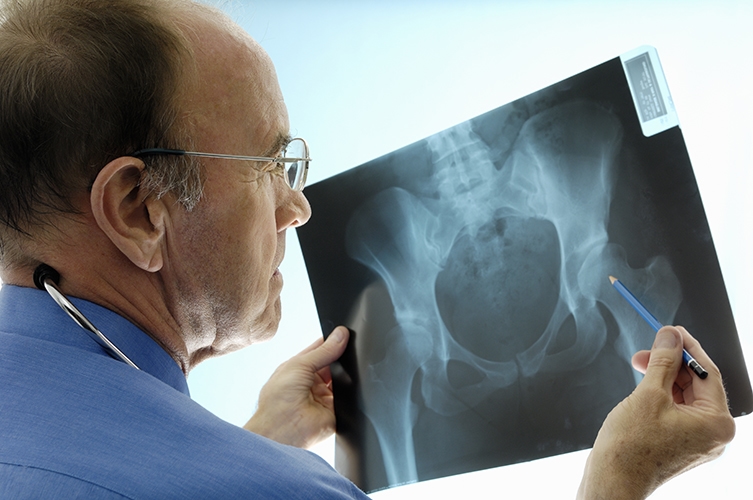Is Dense Breast Tissue Cause for Concern?
Oct 23, 2023

There’s a relationship between density and cancer risk, but advanced screening options can help.
Breasts are unique — no two women have the same shape and size. The tissue that makes up breasts varies from woman to woman, too. Breasts may be considered dense or fatty, and their density can affect a woman’s risk of breast cancer.
What Is Dense Breast Tissue?
Breasts have three types of tissue:
- Glandular tissue: These lobes and ducts carry and hold milk for breastfeeding.
- Fibrous tissue: Similar to ligaments, this tissue supports the weight of the breast and holds it in place.
- Fatty tissue: This fills the space between glandular and fibrous tissue. Women with larger breasts typically have more fatty tissue than women with smaller breasts.
Breasts are considered dense when there is a large amount of fibrous and glandular tissue relative to the amount of fatty tissue.
Non-dense breasts have only a few areas of dense tissue distributed throughout the fatty breast tissue, or no dense tissue at all — about 50 percent of women older than 40 who have had a mammogram have this. Meanwhile, 2 in 5 women have dense breasts, meaning fibrous and glandular tissue is evenly distributed through the breasts. An additional 10 percent of women have extremely dense breasts with very little fatty tissue.
You won’t be able to tell whether you have dense tissue by feeling your breasts in a self-exam or by having a clinical exam. In fact, you probably won’t know your breast density until you have a mammogram. A radiology expert can determine your density by reviewing the imagery and classifying it on a scale from “almost entirely fatty” to “extremely dense.”
Why Is Breast Density Important?
While dense tissue does not cause cancer, women with dense breasts do have a higher risk of developing breast cancer. Women with extremely dense breasts are twice as likely to have cancer as those with average-density breasts. For this reason, women with dense breasts should work with their providers to develop a breast cancer screening plan based on their overall risk.
One of the most important reasons to know whether you have dense breasts is visibility when it comes to cancer screenings. On a mammogram, fatty tissue shows up as gray, while fibrous and glandular tissue is white. Cancer cells or tumors, however, are also white on breast images. This means it can be harder to identify cancer in women with dense breasts, particularly when a tumor is small. Although a diagnostic mammogram can be up to 98 percent accurate at identifying cancers in low-density breasts, that number can be as low as 30 percent in high-density breasts, according to Yale Medicine.
Who Is More Prone to Dense Breasts?
Anyone with breasts can have dense tissue, and density can change over time. However, dense breasts are more common in younger people, women who are pregnant or breastfeeding, people with smaller breasts, and those with low body weight. Women undergoing hormone replacement therapy may also develop dense breast tissue during treatment.
Should You Get Annual Breast Screenings?
Density can change over time, so even if your breast tissue is classified as non-dense in your first mammogram — meaning cancer is easier to identify — it’s important to continue regular cancer screening. Additionally, dense tissue is just one factor that contributes to the risk of developing breast cancer. Others include family and personal history of certain cancers, age, reproductive history, and lifestyle factors such as obesity and alcohol consumption. It’s important to be screened according to national guidelines and your provider’s advice. Women with an average risk and normal breast density should have a mammogram every year beginning at age 40.
Read More: What Is My Risk for Breast Cancer?
What Should I Do if I Have Dense Breasts?
If you have dense breast tissue, talk to your primary care provider about a screening plan that accounts for your breast density, family and personal cancer history, and certain lifestyle factors. Routine screening options include a 3D mammogram, which provides a clearer picture than a traditional 2D mammogram, and an MRI, which uses magnets and an injected contrast material to create an image of the breast. Your provider will help you understand which screenings are appropriate for you.
If you are overdue for a screening mammogram, schedule an appointment at your local Adventist Health imaging center today.


